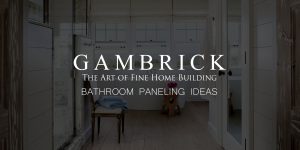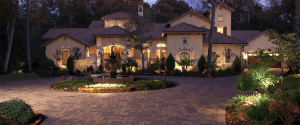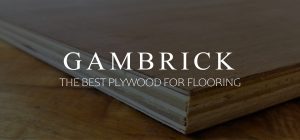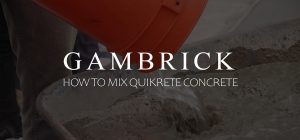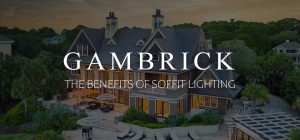What Is Wood Composite?
Wood composite is a broad term that includes a wide range of man made wood products. Examples are Decking, Plywood, Parallams and OSB. They’re all made by binding strands, fibers, sawdust or pieces of wood together with adhesives and other ingredients like recycled plastics. Composites contain the same wood used in lumber but when combined with other ingredients become stronger and more durable. They’re a relatively new material when compared to traditional composites like MDF or particleboard but very popular. It’s also known as man-made wood, engineered wood, or wood-plastic composite (WPC).
Composite wood is a mixture of several components that may include plastic, straw and glue. Particles and fibers from different species of wood are combined with adhesives to bind them together. Many people think composite wood looks fake. But real wood veneer can be applied to the outside to make products more attractive such as with thin wood flooring.
Composite woods are often used to make cabinets, furniture, sheathing, flooring and siding. They’re less expensive than hardwood but often stronger while looking just as good. Some companies avoid building with composite wood because it may contain harmful chemicals due to the substances used to mix and bind the wood particles.
The North American wood composite market has exceeded $1 billion in sales for the last few years and has seen 200% growth between 2015 and 2020. Research shows that the US market for these products will experience 20% annual growth over the next decade. This is primarily due to how popular composite decking is.
As wood composite popularity increases, companies are developing new products, such as railings, trim and fascia.
What Does Wood Composite Mean?
Composite materials are made by mixing different ingredients together to form a new product. In this case the product is wood composite.
The word wood composite is a broad term used to describes lots of different products. Any man made material that contains some real wood is considered a wood composite.
Some wood composite materials are made primarily of wood. While others have just a little. The quantity of real vs fake depends on the product. For example, plywood is mostly real wood held together by glue. But composite decking has very little wood in it. Both are considered a wood composite product.
Man made products like Timbertech or Trex decking, plywood and OSB are all examples of wood composites.
Real Ingredients are generally wood veneers, fibers, strands chunks or sawdust.
Fake Ingredients are typically made from plastics, glues and other unnatural materials.
Using a composite product definitely has some benefits which may include:
- More durability & strength
- Resistance to the elements
- No maintenance
- Crack resistance
- Doesn’t expand and contract as much as natural products
- Can have a flat smooth surface that holds paint really well
However, there are some drawbacks too. Composite materials often have a higher upfront cost and a fake appearance. Although when a veneer is used they look very real.
Is Composite Wood Fake Wood?
Whether or not composite wood looks like fake wood or not depends on the type of composite you’re using. There’s such a wide range of options it’s hard to give a definitive answer.
Here are some common examples:
- Painted cabinets are generally made with composite panels. It looks like real wood because it’s painted.
- Same answer with composite trim. If you’re painting the molding you’ll never know the difference.
- Composite lumber, like parallam beams, looks like wood chunks glued together.
- Plywood is a composite wood. Some is made from veneers glued together. This type looks real. But plywood that’s made from wood chunks glued together looks more fake.
- Composite decking looks fake. Even the stuff that’s designed to look real still looks very fake to me.
- Thin wood flooring looks real. But that’s because it has a thin wood veneer finish. You don’t see the fake looking composite bottom side when it’s installed.
Composite lumber generally doesn’t look like wood. But this can actually be an advantage. They don’t have surface defects that show up under a coat of paint. MDF is a common material used for interior trim and cabinetry. It’s easy to work with, costs less, doesn’t expand and contract much, and holds paint really well. This is why most high end cabinets include MDF panels.
What Is Composite Wood Made Of?
Composite lumber is made of various things like plastic, glues, chemicals and additives. Sometimes they include a thin layer of real wood veneer on the outside. The specific ingredients and ratios used varies from brand to brand.
Oftentimes, manufacturers use recycled materials in their composites.
- Wood components may include sawdust, chips, veneers and other fibers.
- Plastic elements typically include polypropylene (PP), polyvinyl chloride (PVC), and or polyethylene (PE).
- Manufacturers finish off the material with a wide range of additives that help stabilize the plastic, protect from UV damage, and color the boards.
The outer layer is usually the one that contains some real wood. The inner layers are made from a variety of materials to increase strength, durability and save money. Generally composite materials are less expensive than solid wood. 90% of a boards construction can be cheaper materials with just a thin sliver of real wood glued to the outside.
This can be a good thing because you get the look of real wood without the high cost. But it can be bad because the wood is usually only a few millimeters thick. If you have to sand or resurface the wood, good luck. You won’t have much material to work with.
Some composites don’t look real at all. The wood materials are ground up and mixed with glues, plastics and other substances. They don”t even try to make it look real. Typically this includes things like decking.
Engineered Wood
Engineered wood is a type of composite wood. It’s made by gluing thin strips of wood together with alternating grains. Or by gluing wood chunks together. This type of construction is supposed to be stronger than solid wood.
Engineered wood, like composite, is a man made product.
Most new homes built these days use engineered wood joists and beams. And some even use engineered studs. They’re more expensive than regular wood but you can span greater distances with them. Especially with things like TJI Joists and Parallam beams.
Plywood is a great example of engineered wood. If you look at it from the side you can see it’s thin layers that are held together by glue. By alternating grain direction, plywood is much stronger than a solid piece of wood the same thickness as the plywood.
Is Wood Composite Real Wood?
Composite wood, or engineered wood, in not a natural product. It’s made from a variety of materials that are pressed and held together by glue.
One of the layers, usually the one on the outside, is real wood. This is called a veneer. Just this single thin layer is real wood. But the other layers are typically made from a mix of components that may include plastic, glue, chemicals and straw.
Composite is a mix of all kinds of materials that make up the bulk of it’s thickness. The combination of materials is what gives it strength and durability. But overall, it’s not a natural product. However, if there is a single thin layer of actual wood on the outside, some consider it to be real wood.
I see this a lot in flooring. Many manufacturers make thin wood flooring products that snap together. It floats on top of the sub-floor rather than getting nailed in like traditional hardwood floors. They’re a composite material that only contains a very slim layer of actual wood, but they’re marketed and sold as real wood flooring. I guess it’s true, they do contain some real wood veneer, but the bulk of the flooring’s construction is composite.
So is wood composite real wood? If it has the veneer and what you see is real wood, most people consider it to be wood.
Properties
Wood composite’s physical and mechanical properties primarily depend on the interaction between wood and thermoplastic. Manufacturing companies incorporate a coupling agent to improve this interaction. Bear in mind that incorporating an additive is one of the most efficient ways to enhance interaction between wood and thermoplastic material.
Additives are an excellent way to improve compatibility between hydrophilic wood, leading to increase moisture absorption. Because wood composite has hydrophobic plastic with a lack of water affinity, it leads to the formation of single-phase wood composite that results in a stable product than solid wood.
Besides, traditional pressure-treated wood with chromate copper arsenate coating is becoming unpopular in the wood industry because of the toxic health hazards and reduced Eco-friendliness. The authorities have banned arsenic-based compounds in the U.S because they have direct contact with humans. Generally they have a greenish appearance when compared with un-treated wood.
On the other hand, wood composite is a relatively safe material. Thus, it is a popular alternative to treated wood products.
Advantages
The primary advantage of wood composite are its eco-friendly properties as manufacturers use recycled plastic and waste wood material for its manufacturing. Wood composite also has a lower maintenance cost than solid wood. Low-life cycle cost is one of the primary reasons for the fast growth of wood composite.
Although wood composite decks have about 15% more production cost than pressure-treated lumber, it requires a lower maintenance cost. Similarly, the actual payback period is lower when compared to other materials, including pressure-treated decking. This increases over time since real wood can need a lot of care as it ages.
Wood composite has excellent dimensional stability with less variability, making it one of the best products for things like decks. A growing body of research evidence shows that wood composite has high durability, strength, and extended service life, making it an excellent material for indoor and outdoor applications.
It also has natural decay resistance against insect and fungi attack. Because wood composite has customizable makeup, the material can withstand harsh weather conditions, leading to less overall damage than other wood material. Therefore, this type of material will generally stand the test time for a wide range of construction projects with a lot less maintenance.
Unlike regular wood, fasteners, including screws and nails, can hold wood composite better, leading to enhanced durability, strength, and stability. Besides, wood composite has a reduced likelihood of breaking or splitting when you use screws near the planks’ end.
Disadvantages
Although there are many advantages of wood composite, it comes with several downsides. Some products can rapidly absorb moisture or water vapors, leading to decay. However, the decay due to moisture is relatively slower than solid wood. If your using it to build something like a deck and your location sees lots of snow and rain, make sure you buy a composite that doesn’t have water absorption issues. Some products definitely due better than others in the area.
Research highlights that thermal expansion, time-dependent deformation or creep, difficult paint application, and high density are other disadvantages of wood composite.
Although wood composite is an excellent alternative to wood, it has a higher up front cost. Bear in mind that the added durability isn’t cheap. If you plan on using the material for only a few years it may not be worth the added cost.
Moreover, wood composite requires low maintenance, but they are not entirely maintenance-free. It’s also prone to fading and other types of damage.
Experts say that wood composite used in construction projects both interior and exterior usually don’t increase home value, leading to little or no return on investment (ROI) in this area.
Splinters
Splinters are a problem with real wood, especially when not cared for properly. As a deck ages, the wood starts to grey and break apart which can create lots of splinters. This can be annoying and painful to deal with.
Another big factor is the species you use. Pine splinters quite a bit. But harder species like bamboo or Ipe typically don’t. However with proper maintenance it’s not as big an issue.
But did you know composite materials can splinter too. And when they do it’s bad. While it is rare to see. When it happens it’s painful. The splinters are like daggers that go in deep and can really hurt. Also I wouldn’t want a fake material stuck in my body for very long. I’ve had wood splinters stuck for a while that I couldn’t get out and didn’t worry much. But I wouldn’t feel the same about something unnatural.
Is Composite Wood Good?
Yes, composite wood is a great material. It just depends on where and how you use it.
- Wood decking like is very durable. Almost every deck we build uses composite. It lasts a long time and doesn’t require maintenance.
- Most cabinets and trim use composite because it’s flat and great for painting. And it doesn’t expand and contract as much as wood.
- Engineered lumber is very strong and used to build most new homes.
- Plywood is a form of composite wood.
- Most homes are using engineered thin wood flooring. It’s water resistant and looks great. And it’s easy to install.
What Is Composite Wood Called?
Composite wood products have many names. MDF, fiberboard, plywood, TJI, parallam, and OSB are all examples of composite wood. But overall, the broad term the includes all these materials and more, is either composite or engineered wood.
How Is Wood Composite Made?
Wood composite is usually made from the same hardwoods and softwoods used to make lumber. The sawmill’s scraps are gathered and re-used to make composites. This makes composites a type of recycling. If it weren’t for composite materials, the scraps would be thrown out.
Mixing ground wood particles, sawdust, strands, veneers or chunks with heated thermoplastic resins and other materials can create a new product.
Some manufacturers combine and process the materials into pellets which are melted and formed into the final shape. Others create the final product by a one-step mixing and extrusion process.
Virgin and recycled thermoplastics are used with polyethylene-based products being the most common. UV stabilizers, colorants, binding agents and lubricants can also be added to create a variety of products.
Common Wood Composites
Plywood is considered a composite wood product. It’s manufactured from sheets of cross-laminated veneer that are pressed and glued together.
Fiberboard is made by combining wood fibers with wax and a resin binder under high temperatures and pressure.
Particleboard is manufactured from wood chips or sawmill shavings pressed with a synthetic resin.
Oriented Strand Boar (OSB) is made from chunks of wood glued together in layers. These are then cross-oriented to give the panel strength and stiffness.
Laminated Timber is created using dimensional timber glued together into structural columns or beams.
Decking is made by mixing sawdust, plastics, glues and other ingredients to form a durable material resistant to the elements.
How Is Wood Composite Used
Composite wood products are used in a variety of different ways, including residential and commercial construction.
- Engineered products are used to replace steel for joists and beams.
- Maintenance free outdoor decking.
- Railings, fencing, benches, windows, door frames, cladding, trim, cabinets, etc.
Engineered products can be used in almost any application.
Summary: What Is Wood Composite?
Wood composite is a broad term that includes a wide range of man made products. Examples are Decking, Plywood, Parallams and OSB. They’re all made by binding strands, fibers, sawdust or pieces of wood together with adhesives and other ingredients like recycled plastics. Composites contain the same material used in lumber but when combined with other ingredients become stronger and more durable. They’re a relatively new material when compared to traditional composites like MDF or particleboard but very popular. It’s also known as man-made wood, engineered-wood, or wood-plastic composites (WPC).
Composites are a mixture of several components that may include plastic, straw and glue. Particles and fibers from different species are combined with adhesives to bind them together. Many people think composite products look fake. But real wood veneer can be applied to the outside to make products more attractive such as with thin flooring products.
Composites are often used to make cabinets, furniture, sheathing, flooring and siding. They’re less expensive than hardwood but often stronger while looking just as good. Some companies avoid building with composite materials because it may contain harmful chemicals due to the substances used to mix and bind particles together.
The North American composites market has exceeded $1 billion in sales for the last few years and has seen 200% growth between 2015 and 2020. Research shows that the US market for these products will experience 20% annual growth over the next decade. This is primarily due to how popular composite decking is.
As composites popularity increases, companies are developing new products, such as railings, trim and fascia.
If you have any questions or comments E-mail any time.

